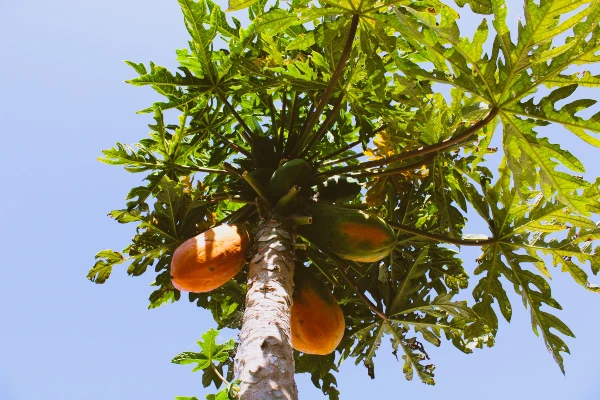We use affiliate links. If you purchase something using one of these links, we may receive compensation or commission.
Today we will be discussing one of my, and many other peoples’ favorite tropical nut trees –the cashew. The cashew, anacardium occidentale Is part of the larger family of the Anacardiaceae. Also known as the cashew or sumac family. This family contains many other well known plants such as mango and pistachio.
Where Did the Cashew Tree Come From Originally?
So where do these amazing trees come from? Where do cashew trees grow? Originally they were native to northeastern Brazil and southeastern Venezuela. Thanks to the efforts of Portuguese explorers the worldwide distribution of the cashew tree began in the 1500s.
Notably being brought to Goa, India; also a Portuguese settlement at the time, in the mid 1500s. From India they were spread throughout Southeast Asia, and eventually onto Africa. Export of the cashew nut began as early as the 1500s from Brazil. Today the Republic Cote d’Ivoire or the Ivory Coast, and India seemed to be the top exporters.
Where Do Cashew Trees Grow?
Cashew is a great tree for farming in the lowland tropics, and is said to do well in the same places where mangoes or tamarind grow. The original cashew varieties first cultivated were quite large. Growing between 40 to 50 feet tall.
Today however there are many dwarf cultivars used which are generally around 20 feet tall. The larger varieties take 3 years from planting until initial production begins. Commercial harvesters wait around 8 years for their first viable harvest. With the dwarf strains it is one year until initial production and three years to commercial viability. The dwarf varieties yield substantially more per hectare than their older, taller counterparts. Often yielding up to four times as much.

What Part of Cashew Is Poisonous?
Now some of you readers may have heard that the cashew nut is poisonous. So what of the cashew is poisonous, and how poisonous is it? The cashew like many other members of the Anacardiaceae family contain the naturally occurring toxin urushiol. Contact with the urushiol can cause itching, and rashes.
How Poisonous Are Cashews?
While contact with this toxin is generally not fatal, it can be quite unpleasant. The cashew in its raw unpressed state contains this toxin around its shell. Raw cashew is treated with a number of different methods usually involving heat and steam, making it safe for consumption.

Can You Eat the Fruit of a Cashew Tree?
So if you’re wondering at this point, what about the cashew fruit? Can you eat the cashew fruit raw? Yes, you can. It is safe to eat raw although it is a bit astringent.
The cashew tree is a worthy addition to any tropical setup. It can be used to produce an immense array of products. From just the simple fruits, and nuts are made a variety of butters, oils, juices, and fermented beverages. The leaves from the tree, and the leftovers from processing the nuts into oil can be used as animal feed. The outer shells are processed for a number of their derivatives which are used for making things like waterproofing compounds, paints, and lubrication materials. The esteemed cashew tree –healthy, versatile, and delicious!



